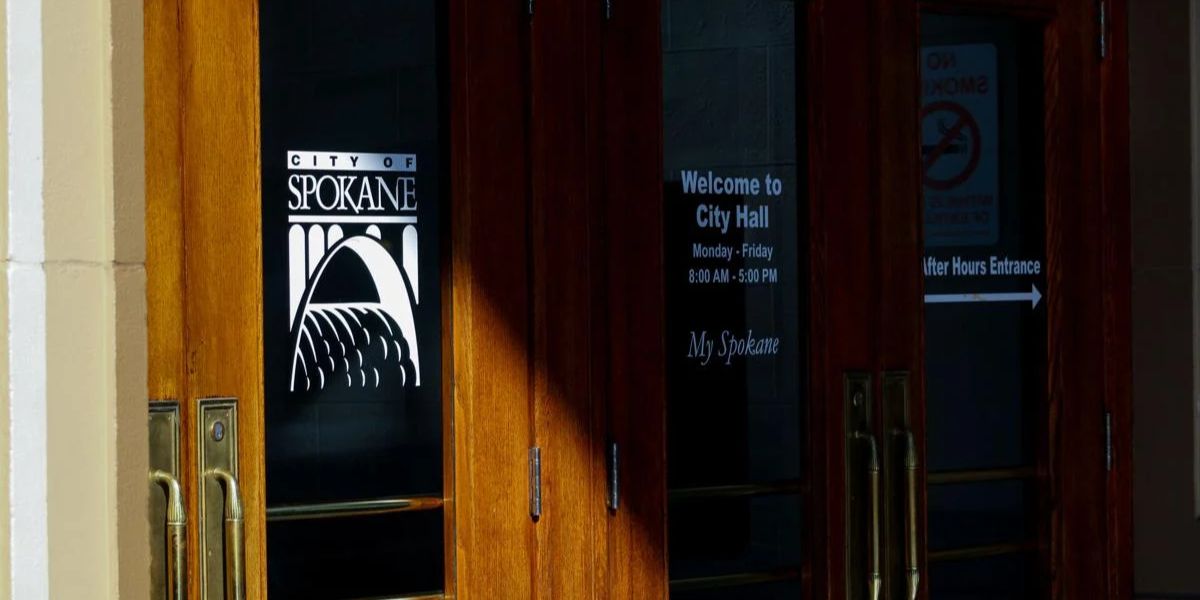After months of gathering comments, Mayor Lisa Brown’s new homelessness strategy arrived on the Spokane City Council’s desk on Monday, setting the stage for weeks of heated debate.
If enacted, the regulations would significantly alter the city’s response to homelessness. The revamp would change a number of laws, including the opening of shelters and the regulation of public camping. However, several council members remain cautious following Brown’s major announcement last Thursday.
Councilmembers Jonathan Bingle and Michael Cathcart learned about the mayor’s plan only hours before it was unveiled. Brown conducted a private press conference with the media on Wednesday but did not invite either conservative, exacerbating tensions among the officials.
Cathcart and Bingle frequently clash with the council majority on homelessness issues, citing a lack of transparency and collaboration. During a committee meeting on Monday, officials discussed all three suggestions and added a fourth to prohibit “aggressive solicitation.”
Each ordinance will be on the council’s legislative agenda for a vote in the coming weeks.
The first idea would restructure the city’s homeless approach around four pillars: healthcare, outreach, multidisciplinary involvement, and economic security. While primarily aspirational, the H.O.M.E. Starts Here Initiative promotes treatment and services above citations.
If enacted, the ordinance would make various goals into law while also creating a glossary of terminology like redlining. It serves as the foundation of the approach, leaving enforcement to the other suggestions, however it does call for interagency coordination to avoid encampments.
The proposal lists more than 20 aims, including increasing housing supply and services through the scattered-site model, developing a data-driven system, integrating public safety teams with social services, and boosting economic stability through job training and other ways.
The second plan changes the way the city activates surge shelters during extreme weather from a precise temperature to index measures, such as how hot or cold it feels. However, it also establishes new criteria for the site of future shelters, requiring public hearings with communities before to opening.
If approved, any facility receiving at least $50,000 per year from the city must have at least one public meeting and obtain council approval before opening a location. Similar to a recently overturned state legislation, it prohibits facilities within 1,000 feet of any school.
Except for good neighbor agreements, most aspects of the ordinance do not apply to existing services. If permitted, facility operators must enter into a contract that encourages cooperation between the city and the operator in order to address safety concerns and resolve community problems.
The contract must include the operator as well as officials from the city’s Community, Housing, and Human Services Department and the Office of Neighborhood Services; however, it may also include police, city council members, adjacent businesses, and property owners, among others.
The third plan repeals the city’s “Sit & Lie” and pedestrian interference rules, which Cathcart and Bingle have repeatedly urged for stricter implementation. Similar to those, this would make it illegal to intentionally restrict access to public property.
Waiting in line for the bus will not get you in trouble, but blocking a walkway and refusing to comply with an officer may result in a penalty. However, if you receive treatment or housing services from a city-designated provider, the statute prohibits police from citing you.
Unauthorized encampments are treated differently under the plan, which requires a seven-day notice before penalizing or disbanding the gathering unless there is a severe risk to public safety.
The final legislation offered Monday would codify regulations prohibiting aggressive soliciting if the council repeals the pedestrian interference statute.
The law reads: “Aggressive solicitation means to solicit anything of value and intentionally engage in conduct that would likely intimidate a reasonable person, including but not limited to touching, following, persistently soliciting anything of value after being refused, using violent or threatening language or gestures, or taking similar actions to induce compliance with the solicitation.”



